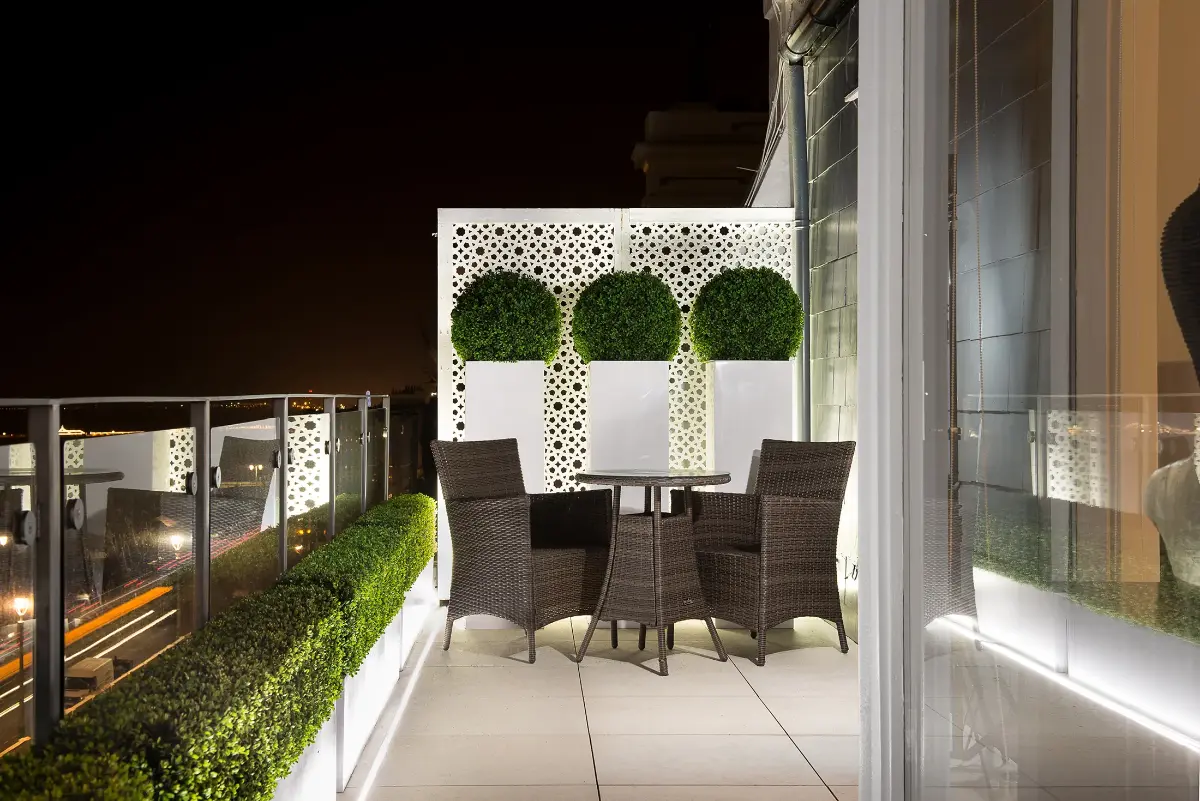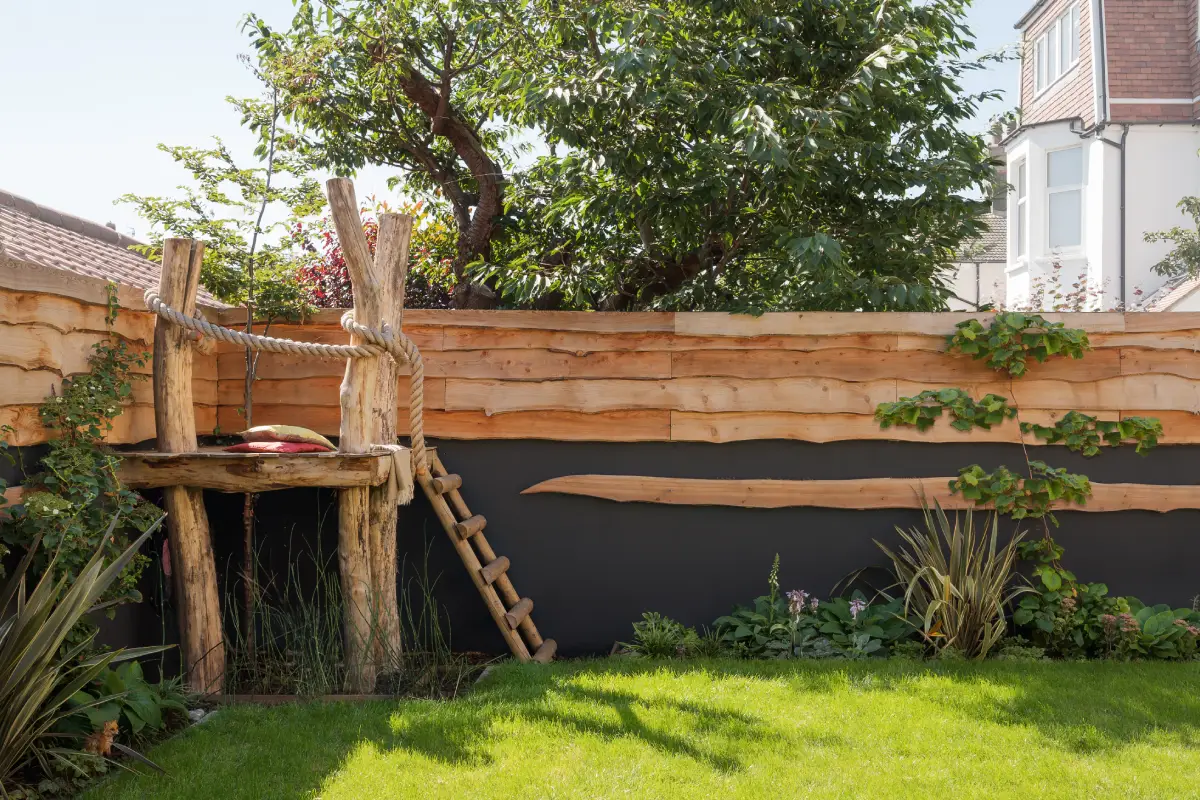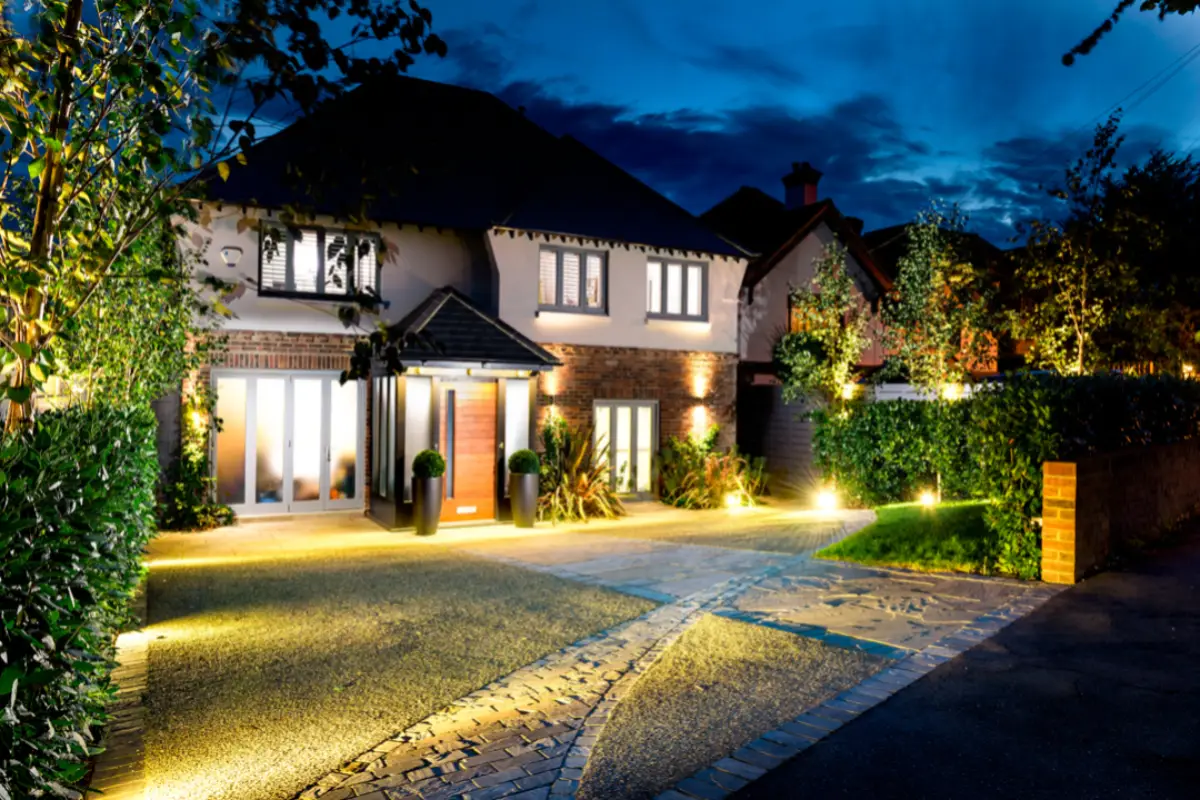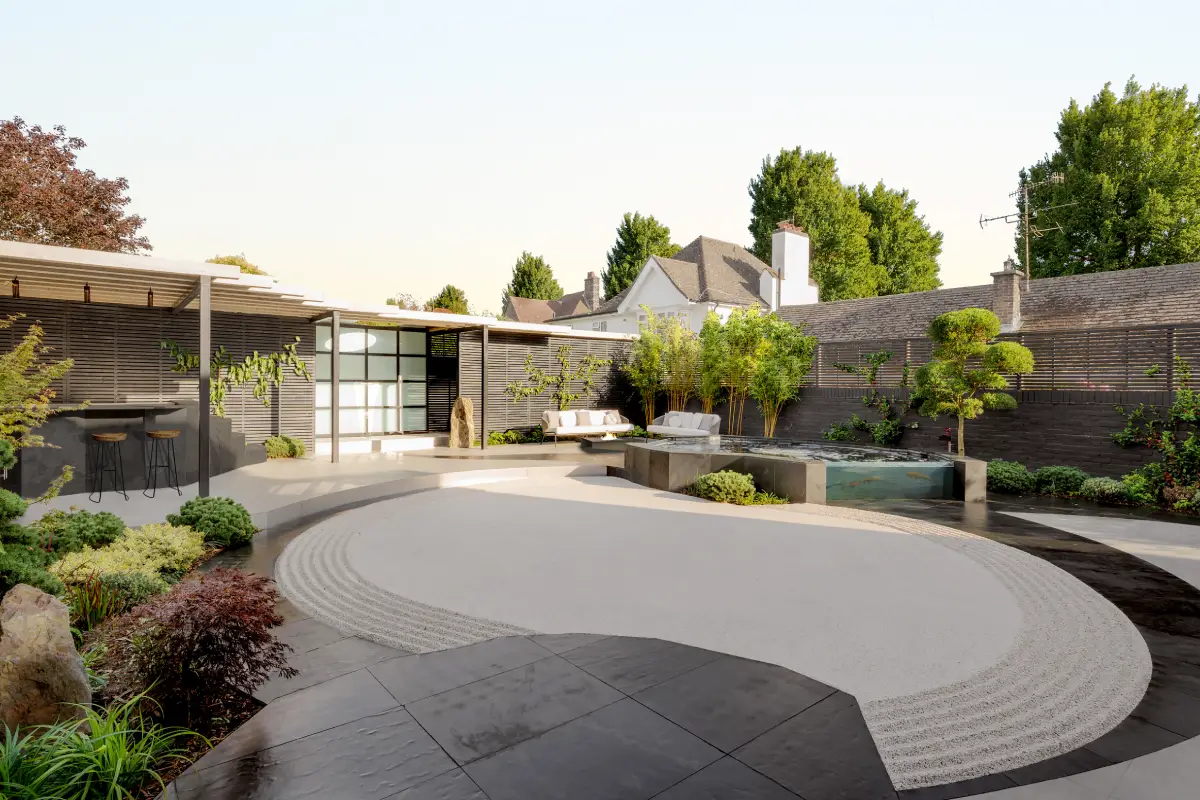In urban landscapes, the creation of roof terraces presents a golden opportunity to fuse practical outdoor use with the principles of sustainability. These elevated havens not only provide essential outdoor space in densely populated environments but also stand as a testament to green design when executed with sustainability in mind. Drawing on our experience, we share some of our tips and secrets for implementing sustainable strategies for designing a roof terrace that marries aesthetic elegance with eco-consciousness.
Choose Eco-friendly Materials with a Light Footprint

The journey to a sustainable roof terrace begins with material selection. Prioritising lightweight, recycled, or sustainably sourced materials not only lessens the structural load but also underscores a commitment to environmental stewardship. Inspired by design services that advocate for green choices, opting for decking and furniture made from reclaimed wood or recycled composites sets a foundation that is both durable and ecologically responsible. Such materials not only reduce waste but also contribute to a narrative of sustainability that enhances the space's appeal.
Incorporate Native Flora and Support Pollinators
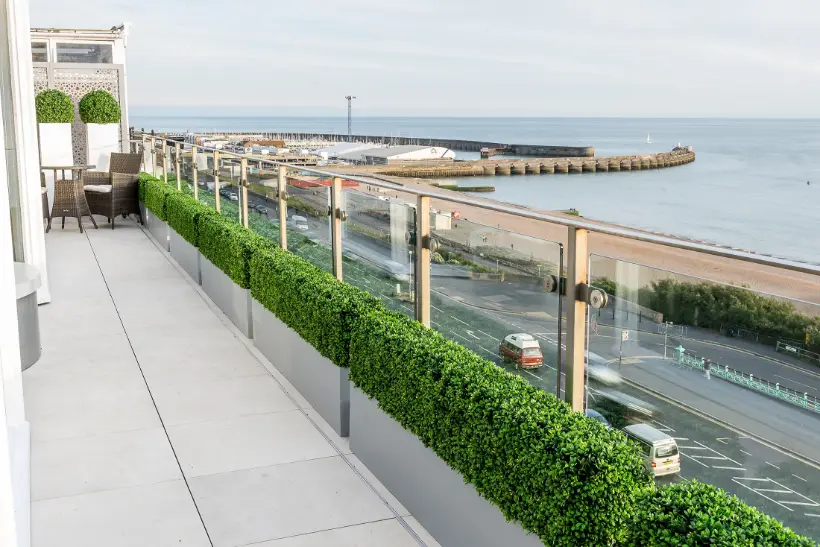
Embracing plantings native to the local region and selecting species that encourage pollinator visits are crucial steps in fostering biodiversity and ecological balance on your roof terrace. As highlighted by design experts, including those at Langlea, native plants thrive with minimal intervention, conserving water and supporting the local ecosystem. Introducing pollinator-friendly flowers and shrubs not only adds vibrancy and life to your terrace but also plays a vital role in urban wildlife conservation, aligning with the broader goals of sustainability.
Harness Rainwater for Irrigation
A hallmark of sustainable terrace design is the efficient use of resources, notably in water management. Implementing rainwater harvesting systems as seen in professional services allows for the collection and utilisation of rainwater for irrigation, significantly reducing the demand on municipal water supplies. This approach, endorsed by eco-conscious design practices, underscores the importance of resource conservation in creating a sustainable outdoor living area.
Opt for Solar Lighting and Energy-saving Solutions
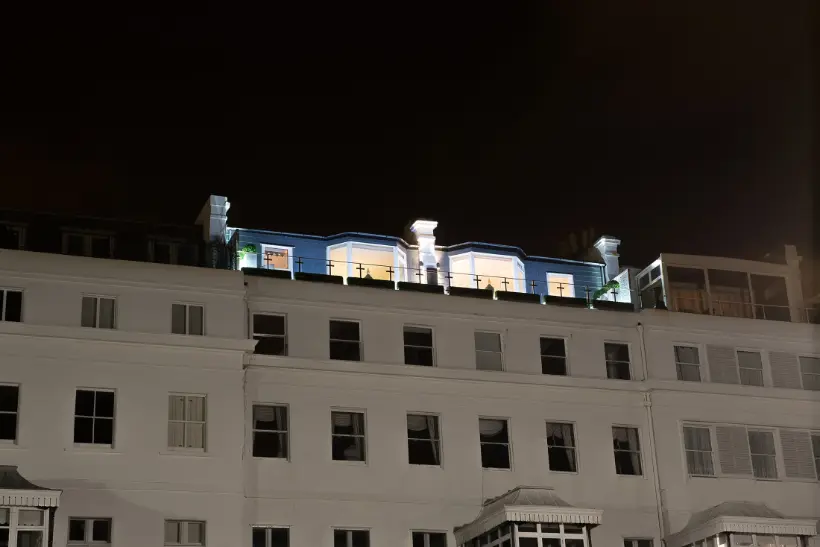
Illumination and energy use on roof terraces are effectively managed through sustainable innovations. Solar lighting systems and LED fixtures, recommended by design specialists, offer a pathway to reducing electricity consumption while maintaining a beautifully lit space. Employing renewable energy sources and energy-efficient lighting aligns with the sustainable ethos portrayed by leading landscape design services, contributing to a terrace that is not only functional after dusk but also environmentally friendly.
Design for Climate: Shading, Wind Protection, and Microclimates
Creating a comfortable microclimate is essential for the enjoyment and ecological efficiency of your roof terrace. Designing with natural elements such as shading structures and windbreaks, as advocated by landscape design experts, can naturally regulate temperature and wind exposure. This not only enhances comfort without relying on energy-intensive solutions but also reflects a deep understanding of sustainable design principles, as practised by industry leaders in the field.
Crafting a sustainable roof terrace is an exercise in thoughtful design, resource conservation, and ecological enhancement. By adopting these sustainable practices, inspired by the expertise and services of industry leaders like those showcased on platforms such as Langlea, designers and homeowners alike can create spaces that are not just visually appealing but also environmentally responsible. These green outdoor sanctuaries serve not only as personal retreats but also as contributions to a more sustainable urban landscape, exemplifying how design innovation can work hand in hand with nature conservation.

